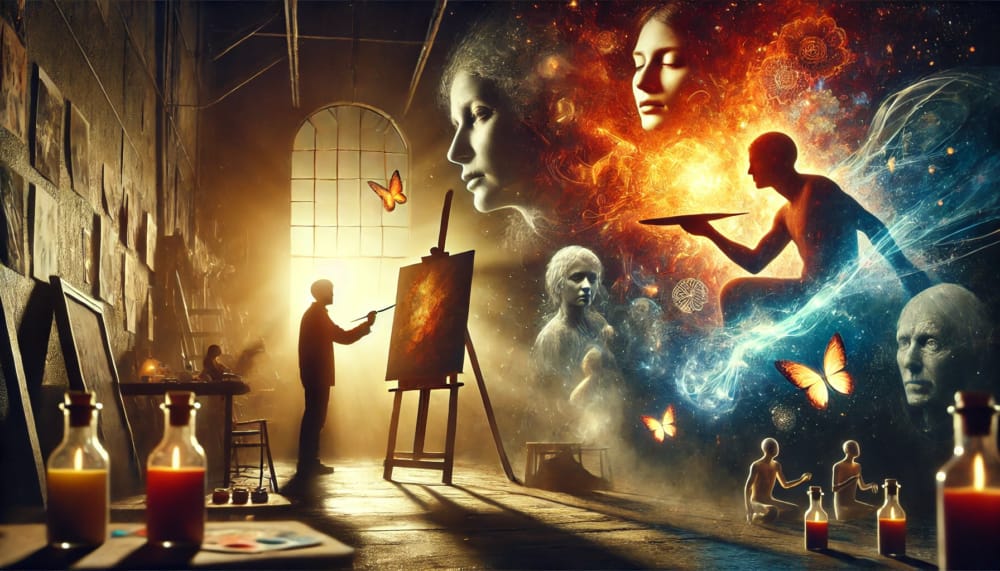The Unmatched Influence of Art on Human Experience
sculpture society is more than just decoration—it’s a catalyst for transformation. Throughout history, creativity has shaped cultures, challenged perspectives, and fueled social change. From ancient cave paintings to digital art, every brushstroke, word, and performance has left an indelible mark on the world. But what makes art so powerful? And how does it impact individuals and entire societies?
Art as a Mirror of Society: Sculpture Society

Consider some of the most iconic works of art. These include Picasso’s Guernica, Banksy’s political murals, or the Harlem Renaissance’s vibrant expressions of Black identity. Art has always been a reflection of its time, revealing both triumphs and injustices. It challenges the status quo, sparks conversation, and often becomes a force for change.
For example, the protest art of the 1960s and 1970s became a powerful voice against war and discrimination. Similarly, today’s artists use digital platforms to highlight issues like climate change and social inequality. Art not only documents history—it shapes it.
Public Opinion:
Recent surveys show that 75% of people believe art plays a crucial role in social activism. Additionally, 82% feel art helps express cultural identity. Public sentiment confirms that art remains a driving force for reflection and change in modern society.
Takeaway: Art isn’t passive; it’s a storyteller and disruptor, forcing us to confront uncomfortable truths while celebrating resilience and progress.
Traditional vs. Digital Art: A Comparative View
| Aspect | Traditional Art | Digital Art |
|---|---|---|
| Medium | Canvas, paper, sculpture | Software, digital platforms |
| Accessibility | Limited to physical spaces | Global reach through the internet |
| Ownership | Physical possession | Often tied to digital rights and NFTs |
| Preservation | Prone to decay over time | Can be stored and replicated infinitely |
| Interactivity | Mostly static | Often interactive and immersive |
| Market Trends | Gallery exhibitions, auctions | Online sales, NFT marketplaces |
Takeaway:
While traditional art holds historical and tactile significance, digital art expands creative boundaries and accessibility. Both continue to shape the evolving art landscape.
The Emotional and Psychological Impact of Art: Sculpture Society

Why does a painting move us to tears? Why does music give us chills? The answer lies in art’s ability to tap into our emotions and rewire our perceptions. Engaging with art can:
- Challenge perspectives: Art invites us to see the world through different lenses.
- Evoke empathy: A well-crafted story or image can make us feel another person’s joy or sorrow.
- Promote healing: Studies show that art therapy helps individuals cope with trauma, anxiety, and depression.
Art has the ability to connect us with ourselves. It also connects us with others. This makes it an essential tool for emotional well-being, whether it’s a powerful film or a simple sketch.
Public Opinion:
A recent study found that 88% of individuals who regularly engage with art report feeling happier. They feel more connected to others, whether through viewing or creating. This underscores the strong emotional and mental benefits of artistic expression.
Art as a Force for Social Change: Sculpture Society

- Street Art: Graffiti and murals challenge power structures, from Banksy’s anonymous satire to politically charged murals in cities worldwide.
- Feminist Art: The works of Judy Chicago and Guerrilla Girls highlighted gender inequality. Their impact was felt in the art world and beyond.
- Music and Poetry: From Bob Dylan’s protest songs to spoken-word performances addressing racial injustice, these mediums have mobilized movements.
Public Opinion:
Polls suggest that 70% of respondents believe art has the power to influence political and social movements. More than half say that public art installations make them more aware of social issues.
The Digital Age: How Technology is Transforming Art

The art world is no longer confined to galleries. Digital tools, artificial intelligence, and virtual reality are rising. The way we create and consume art is evolving at an unprecedented rate.
- Social Media: Platforms like Instagram and TikTok have made artists global sensations overnight.
- NFTs and Digital Art: Artists are now monetizing their work through blockchain technology, redefining ownership and creativity.
- Augmented Reality: Interactive art installations are taking engagement to new heights, allowing audiences to experience art in immersive ways.
But with these advancements come challenges. Is digital art as valuable as traditional art? How do we preserve authenticity in an era of AI-generated images?
Public Opinion:
About 65% of people express excitement about digital art innovations. Yet, nearly 40% worry about the loss of traditional artistic values in an increasingly digital world.
Takeaway:
Technology is redefining creativity, making art more accessible than ever while challenging traditional notions of authenticity and value.
Conclusion: Why Art Will Always Matter: Sculpture Society
What You Can Do:
- Support local artists and visit exhibitions
- Engage with art that challenges your worldview
- Use creative expression to tell your own story
Final Thought:
Art is not just a luxury—it’s a necessity. It shapes the world we live in and the people we become. How will you let art transform you?
What’s your favorite piece of art that changed the way you see the world? Drop it in the comments!
Discover more from I-PICKS
Subscribe to get the latest posts sent to your email.

